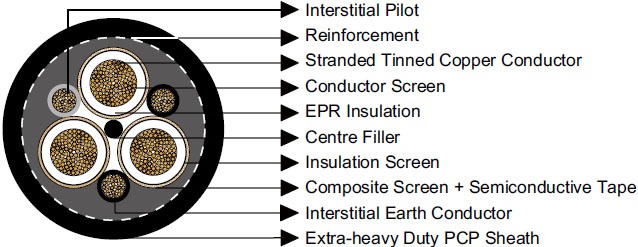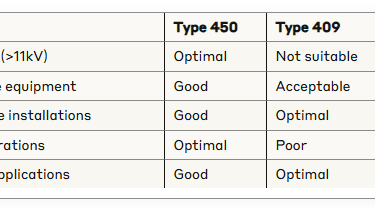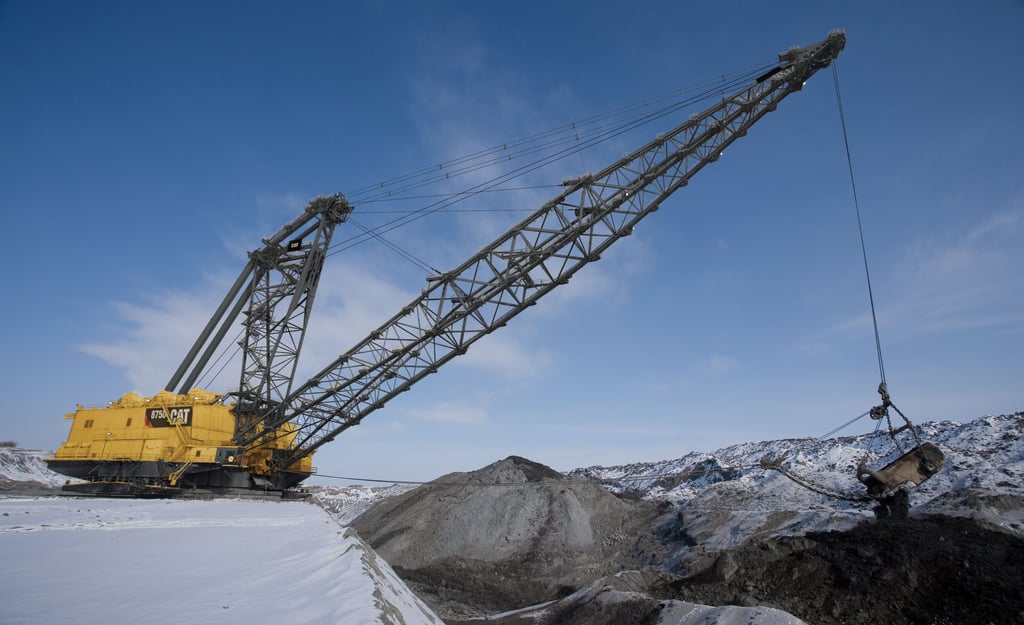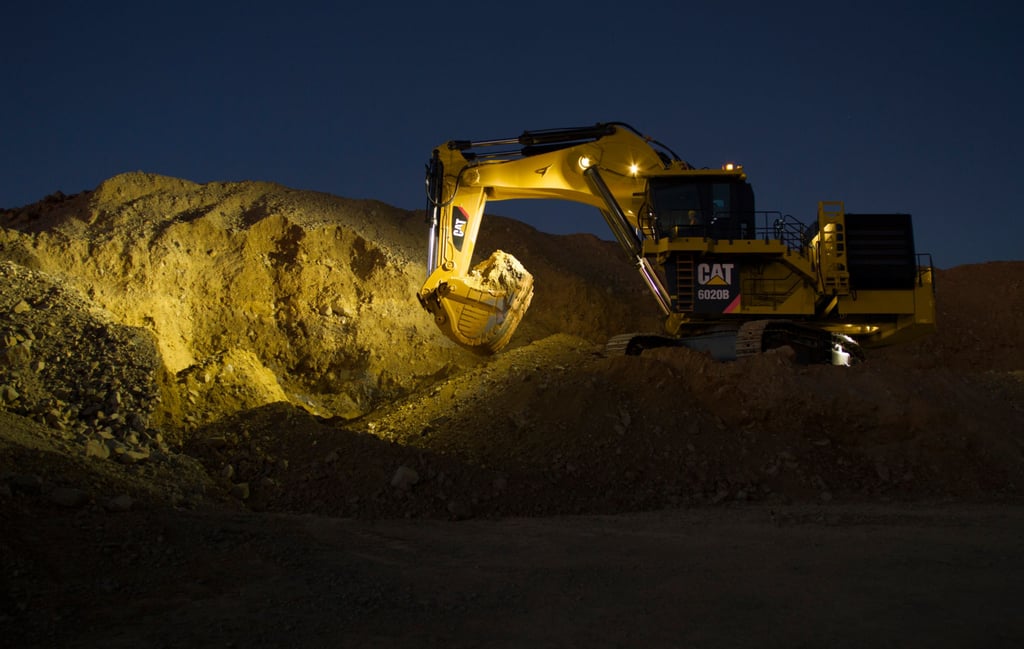Anhui Feichun Special Cable Co.,Ltd Li.wang@feichuncables.com
AS/NZS Type 450 Mining Cables: The Ultimate High-Voltage Solution for Heavy-Duty Mining Operations and Mobile Equipment Applications
AS/NZS Type 450 mining cables - lightweight, copper-screened high-voltage cables for draglines, excavators, and reeling operations. Complete technical specifications, compliance standards, and application guide.
Li.wang@Feichun Cable
7/24/202513 min read


Introduction to Type 450 Mining Cables
Mining operations demand exceptional performance from every component, and electrical cables are no exception. In the harsh, unforgiving environment of mines, where equipment operates under extreme conditions and safety is paramount, the choice of electrical infrastructure can mean the difference between seamless operations and costly downtime. Mining cables must withstand constant flexing, exposure to abrasive materials, extreme temperatures, and the mechanical stresses associated with heavy machinery operations.
AS/NZS Type 450 mining cables represent a sophisticated engineering solution designed specifically for high-voltage applications in the mining sector. These cables are engineered as lightweight, flexible alternatives to traditional heavy-duty mining cables, offering superior performance in applications where weight reduction and ease of handling are critical factors. The Type 450 designation refers to a specific construction standard that prioritizes copper screening technology, reduced diameter design, and enhanced flexibility without compromising electrical performance or safety standards.
The significance of flexible, copper-screened cables in heavy-duty mining tasks cannot be overstated. Modern mining operations increasingly rely on mobile equipment that requires reliable electrical connections capable of withstanding constant movement, vibration, and environmental stresses. Type 450 cables excel in these applications due to their unique construction methodology, which incorporates copper screening for superior electrical performance and electromagnetic interference (EMI) protection, while maintaining the flexibility necessary for dynamic mining applications.
These cables have become indispensable in various mining scenarios, from surface mining operations involving massive draglines and shovels to underground applications where space constraints and mobility requirements demand lightweight, flexible solutions. The copper screening technology employed in Type 450 cables provides excellent electrical shielding properties, ensuring stable power delivery even in electrically noisy mining environments where multiple high-power systems operate simultaneously.
Compliance and Standards
The AS/NZS Type 450 mining cable adheres to a comprehensive framework of Australian and New Zealand standards, ensuring compliance with the stringent safety and performance requirements mandated for mining operations. Understanding these standards is crucial for mining operators, electrical contractors, and safety personnel responsible for cable selection and installation.
AS/NZS 2802:2000 serves as the primary standard governing electrical installations in mines and quarries. This standard establishes fundamental requirements for electrical equipment used in mining environments, including specifications for cable construction, installation methods, and safety protocols. Type 450 cables are manufactured to meet or exceed these requirements, ensuring compatibility with existing mining electrical infrastructure and compliance with regulatory frameworks.
AS/NZS 1125 specifically addresses flexible cables for mining applications, establishing performance criteria for cables subjected to continuous flexing, mechanical stress, and environmental exposure. This standard is particularly relevant for Type 450 cables, as it defines requirements for conductor construction, insulation materials, and overall cable flexibility that directly impact the cable's suitability for mobile mining equipment applications.
AS/NZS 3808 provides guidelines for electrical installations and equipment in hazardous areas, which is critically important in mining environments where explosive atmospheres may be present. Type 450 cables manufactured under this standard incorporate design features that minimize the risk of electrical faults and ensure safe operation in potentially hazardous mining environments.
AS/NZS 5000.1 establishes general requirements for electrical installations, providing the foundational framework upon which mining-specific standards are built. This standard ensures that Type 450 cables maintain compatibility with broader electrical systems and installation practices.
Compliance with these standards matters significantly in Australian mining operations, where regulatory oversight is stringent and safety performance is closely monitored. Non-compliant cables can result in operational shutdowns, regulatory penalties, and most importantly, increased safety risks for mining personnel. The comprehensive compliance framework ensures that Type 450 cables deliver consistent performance, maintain safety standards, and provide long-term reliability in demanding mining applications.
Technical Specifications
The technical specifications of AS/NZS Type 450 mining cables reflect advanced engineering designed to meet the demanding requirements of modern mining operations. These specifications represent careful optimization of electrical performance, mechanical durability, and operational flexibility.
Voltage Range: Type 450 cables are engineered to handle voltage ranges from 3.3/3.3 kV up to 33/33 kV, making them suitable for a wide spectrum of mining applications. The dual voltage rating (phase-to-earth/phase-to-phase) ensures compatibility with various electrical system configurations commonly employed in mining operations. This voltage range covers everything from smaller mobile equipment operating at lower voltages to large-scale mining machinery requiring high-voltage power distribution.
Operating Temperature Range: With an operational temperature range of -25°C to +90°C, Type 450 cables demonstrate exceptional thermal performance across diverse mining environments. This wide temperature range ensures reliable operation in extreme cold conditions, such as those encountered in northern mining operations or high-altitude sites, as well as the high-temperature environments common in deep underground mines or equipment compartments where heat dissipation is limited.
Construction Characteristics: The copper-screened construction represents the defining feature of Type 450 cables. The copper screening provides superior electrical shielding compared to alternative screening materials, ensuring stable electrical performance and excellent electromagnetic interference protection. The reduced diameter design, achieved through advanced conductor and insulation technology, significantly decreases overall cable weight while maintaining electrical performance equivalent to larger traditional cables.
The lightweight construction offers substantial practical benefits in mining applications. Reduced cable weight translates to decreased load on support systems, easier handling during installation and maintenance, and reduced fatigue on mobile equipment systems that must transport cables during operation. The flexible construction allows for tight bend radii and continuous flexing without degradation of electrical or mechanical performance.
Conductor Configuration: Type 450 cables typically utilize finely stranded copper conductors designed for flexibility and durability under constant flexing conditions. The conductor stranding pattern is optimized to minimize fatigue failure while maintaining excellent electrical conductivity. Advanced insulation systems, often incorporating cross-linked polyethylene (XLPE) or ethylene propylene rubber (EPR), provide superior electrical insulation properties and mechanical durability.
Applications in Mining and Industry
AS/NZS Type 450 mining cables excel in applications where traditional heavy-duty cables would be impractical due to weight, flexibility, or handling constraints. Their unique combination of high voltage capability, lightweight construction, and superior flexibility makes them ideal for various mining and industrial applications.
Draglines and Large Excavators: Modern draglines represent some of the largest mobile equipment in mining operations, requiring substantial electrical power for operation. Type 450 cables are frequently employed in dragline applications where traditional cables would be too heavy or inflexible for the continuous reeling operations required. The reduced weight of Type 450 cables decreases stress on dragline electrical systems while maintaining the high voltage capability necessary for powerful dragline motors.
A notable example occurred at a major coal mining operation in Queensland, where the replacement of traditional heavy-duty cables with Type 450 cables on a 1370-class dragline resulted in a 35% reduction in cable weight while maintaining equivalent electrical performance. This weight reduction translated to decreased wear on the dragline's cable handling systems and reduced maintenance requirements.
Mining Shovels and Excavators: Electric mining shovels operating in surface mining applications benefit significantly from Type 450 cable technology. These machines require reliable electrical connections capable of withstanding constant movement, vibration, and environmental exposure. The flexibility of Type 450 cables ensures reliable electrical connection throughout the shovel's operational range while the lightweight construction reduces stress on the machine's electrical infrastructure.
Wharf Cranes and Port Operations: Beyond traditional mining applications, Type 450 cables have found extensive use in port operations, particularly for container cranes and bulk material handling equipment. The marine environment presents unique challenges, including salt exposure, high humidity, and temperature variations. Type 450 cables' robust construction and wide temperature range make them well-suited for these demanding applications.
Underground Mining Applications: In underground mining scenarios, where space constraints and mobility requirements are paramount, Type 450 cables provide significant advantages. Their reduced diameter allows for easier routing through confined spaces while the lightweight construction facilitates handling in environments where manual cable management may be necessary.
Slow Reeling Operations: Type 450 cables are specifically designed for slow reeling applications, where cables must be continuously wound and unwound during equipment operation. The flexible construction and copper screening ensure reliable electrical performance throughout repeated reeling cycles without degradation of electrical or mechanical properties.
Type 450 vs Other AS/NZS Cable Types
Understanding the distinctions between various AS/NZS cable types is essential for optimal cable selection in mining applications. Each cable type is engineered for specific operational requirements, and selecting the appropriate type ensures optimal performance, safety, and cost-effectiveness.
Type 450 vs Type 409 Comparison:
Type 450 and Type 409 cables serve different operational niches within mining applications. Type 450 cables support significantly higher voltage ranges, typically up to 33 kV, compared to Type 409 cables which are generally limited to lower voltage applications. The construction philosophy differs substantially between these types, with Type 450 emphasizing lightweight, flexible design for mobile applications, while Type 409 cables prioritize mechanical robustness for stationary or semi-stationary installations.
Type 409 cables typically feature heavier construction with enhanced mechanical protection, making them suitable for applications where cables may be subjected to severe mechanical stress, such as trailing applications in underground mining where cables may contact rough surfaces or be subjected to crushing forces. In contrast, Type 450 cables excel in applications where weight and flexibility are paramount, such as reeling operations on mobile equipment.
The screening technology also differs between these types. Type 450 cables utilize copper screening optimized for electrical performance and flexibility, while Type 409 cables may employ alternative screening methods designed for mechanical protection and durability under harsh conditions.
Type 450 vs Type 260 Analysis:
Type 260 cables are designed specifically for trailing and reeling applications under medium voltage conditions, typically up to 11 kV. While both Type 260 and Type 450 cables are suitable for reeling operations, Type 450 cables support substantially higher voltages, extending up to 33 kV, making them suitable for high-power mining equipment that exceeds the capacity of Type 260 cables.
The construction approaches differ significantly. Type 260 cables often incorporate rubber-based insulation systems optimized for medium voltage applications and continuous flexing. Type 450 cables utilize advanced insulation technologies that maintain performance at higher voltages while preserving the flexibility necessary for reeling operations.
Application-Based Comparison:
This comparison demonstrates that Type 450 cables occupy a unique position in the cable selection matrix, offering high voltage capability combined with the flexibility necessary for mobile applications.
Benefits of Type 450 Cables
The advantages of AS/NZS Type 450 mining cables extend beyond basic electrical performance, encompassing operational, economic, and safety benefits that contribute to improved mining operations efficiency and reduced total cost of ownership.
Weight Reduction Benefits:
The most immediately apparent advantage of Type 450 cables is their significantly reduced weight compared to traditional mining cables. This weight reduction, often exceeding 30% compared to equivalent capacity traditional cables, provides multiple operational benefits. Reduced cable weight decreases the load on equipment cable handling systems, extending the operational life of reels, guide systems, and support structures. For mobile mining equipment, weight reduction translates to improved fuel efficiency and reduced wear on mobility systems.
The handling benefits extend to installation and maintenance operations. Lighter cables require less specialized handling equipment during installation, reducing installation costs and complexity. Maintenance operations are simplified when cables can be more easily manipulated by maintenance personnel, improving safety and reducing maintenance time requirements.
Dimensional Advantages:
The reduced diameter of Type 450 cables provides significant benefits in confined applications common in mining operations. Smaller cable diameters allow for more compact cable routing, which is particularly beneficial in underground mining applications where space is at a premium. The reduced diameter also allows for smaller reel systems on mobile equipment, contributing to overall equipment compactness and improved maneuverability.
In applications requiring multiple cable runs, the reduced diameter allows for higher cable density in cable trays, conduits, or support systems, potentially reducing infrastructure requirements and associated costs.
Thermal Performance Benefits:
The wide operating temperature range of Type 450 cables (-25°C to +90°C) provides operational flexibility across diverse mining environments. This thermal range ensures reliable operation in extreme cold conditions encountered in northern mining operations, high-altitude sites, or equipment operating in artificially cooled environments. Simultaneously, the high-temperature capability ensures reliable operation in hot underground environments, engine compartments, or equipment exposed to direct solar radiation in desert mining operations.
The thermal performance also contributes to electrical efficiency. Cables operating within optimal temperature ranges maintain superior electrical characteristics, including lower resistance and improved insulation performance, contributing to overall system efficiency and reduced energy losses.
Voltage Drop Mitigation:
For long cable runs common in large-scale mining operations, Type 450 cables' electrical characteristics help minimize voltage drop, ensuring stable power delivery to remote equipment. The copper conductor construction and optimized insulation system maintain excellent electrical performance over extended distances, reducing the need for intermediate voltage regulation or oversized conductors.
Electromagnetic Compatibility:
The copper screening employed in Type 450 cables provides superior electromagnetic interference (EMI) protection compared to alternative screening methods. This is particularly important in modern mining operations where sensitive electronic equipment, control systems, and communication devices must operate reliably in the presence of high-power electrical systems. The EMI protection ensures that cable systems do not interfere with critical mining control and safety systems.
Maintenance and Safety Tips
Proper maintenance and handling of AS/NZS Type 450 mining cables are essential for ensuring optimal performance, extending service life, and maintaining safety standards in mining operations. The unique characteristics of these cables require specific maintenance approaches that account for their construction and typical applications.
Routine Inspection Guidelines: Regular visual inspection should be conducted on all accessible cable sections, focusing on areas where mechanical stress is highest, such as connection points, reel entry and exit points, and areas where cables may contact other equipment or structures. Inspectors should look for signs of insulation damage, conductor exposure, mechanical deformation, or contamination that could compromise electrical performance or safety.
The copper screening should be specifically examined for continuity and proper grounding connections. Any disruption in the screening system can compromise both electrical performance and safety. Connection points should be inspected for corrosion, looseness, or overheating indicators, such as discoloration or unusual odors.
Electrical testing should be performed at regular intervals using appropriate high-voltage testing equipment. Insulation resistance testing should be conducted to verify that insulation systems maintain adequate electrical separation between conductors and between conductors and ground. The screening system integrity should be verified through continuity testing to ensure proper grounding and EMI protection.
Extreme Temperature Handling: While Type 450 cables are designed to operate across a wide temperature range, extreme temperature conditions require special handling considerations. In cold conditions approaching the lower operating limit (-25°C), cables should be allowed to warm gradually before being subjected to flexing or reeling operations. Rapid temperature changes can cause temporary stiffening of insulation materials, potentially leading to mechanical stress if the cable is manipulated before thermal equilibrium is achieved.
In high-temperature conditions, additional attention should be paid to thermal expansion effects on cable length and mechanical stress on support systems. Cables operating near the upper temperature limit (+90°C) should be monitored for signs of accelerated aging, such as insulation hardening or discoloration.
Reel Handling Best Practices for Copper-Screened Cables: The reeling operations common in Type 450 cable applications require specific handling practices to preserve the integrity of the copper screening system and maintain cable performance. Reel speed should be controlled to prevent excessive dynamic stress on the cable, particularly during startup and stopping phases where acceleration forces are highest.
The reel system should be properly aligned to prevent lateral stress on the cable during winding and unwinding operations. Misalignment can cause the cable to wind unevenly, creating stress concentrations that may damage the copper screening or conductor strands over time.
Minimum bend radius specifications must be strictly observed during all reeling operations. Type 450 cables, while flexible, have specific bend radius limitations that, if exceeded, can cause permanent damage to conductors, insulation, or screening systems. The minimum bend radius is typically specified as a multiple of the cable diameter and should be prominently marked on reeling equipment.
Environmental Protection: In mining environments where cables may be exposed to water, chemicals, or abrasive materials, additional protective measures may be necessary. While Type 450 cables are designed for harsh environments, prolonged exposure to corrosive substances can degrade cable performance over time. Protective covers or routing systems should be employed where such exposure is unavoidable.
Documentation and Record Keeping: Comprehensive maintenance records should be maintained for all Type 450 cable installations. These records should include installation dates, inspection results, electrical test data, and any maintenance or repair activities. This documentation is essential for tracking cable performance trends, planning preventive maintenance, and ensuring compliance with mining safety regulations.
FAQ: Type 450 Mining Cable
Q: What is the maximum voltage rating for AS/NZS Type 450 mining cables?
A: AS/NZS Type 450 mining cables are available with voltage ratings up to 33/33 kV (33 kV phase-to-earth and 33 kV phase-to-phase). This high voltage capability makes them suitable for large-scale mining equipment and long-distance power distribution applications in mining operations.
Q: How does the weight of Type 450 cables compare to traditional mining cables?
A: Type 450 cables typically weigh 20-35% less than equivalent capacity traditional mining cables due to their reduced diameter construction and lightweight design philosophy. This weight reduction provides significant benefits for mobile equipment applications and cable handling operations.
Q: Can Type 450 cables be used in underground mining applications?
A: Yes, Type 450 cables are well-suited for underground mining applications, particularly where space constraints and mobility requirements make lightweight, flexible cables advantageous. Their reduced diameter and weight make them easier to route through confined underground spaces while maintaining high voltage capability.
Q: What is the minimum operating temperature for Type 450 cables?
A: Type 450 cables are designed to operate reliably at temperatures as low as -25°C, making them suitable for cold climate mining operations and equipment operating in artificially cooled environments.
Q: How often should Type 450 cables be inspected in mining applications?
A: Inspection frequency should be based on the specific application and operating conditions. For critical applications involving continuous reeling or harsh environmental conditions, monthly visual inspections are recommended, with comprehensive electrical testing performed quarterly or semi-annually.
Q: Are Type 450 cables suitable for permanent installations?
A: While Type 450 cables can be used in permanent installations, they are specifically optimized for mobile applications requiring frequent reeling or flexing. For stationary installations, other AS/NZS cable types may provide better value and performance characteristics.
Q: What makes the copper screening in Type 450 cables superior to other screening methods?
A: Copper screening provides excellent electrical conductivity for grounding and EMI protection, superior corrosion resistance compared to other metallic screening materials, and maintained flexibility necessary for reeling applications. The copper screening also provides better thermal characteristics and longevity in harsh mining environments.
Q: Can Type 450 cables be repaired if damaged?
A: Minor damage to Type 450 cables can often be repaired using appropriate cable repair techniques and materials. However, repair feasibility depends on the extent and location of damage. Damage to the copper screening system or multiple conductors may require cable replacement rather than repair.
Conclusion
AS/NZS Type 450 mining cables represent a significant advancement in mining electrical infrastructure technology, offering a unique combination of high voltage capability, lightweight construction, and operational flexibility that addresses the evolving needs of modern mining operations. These cables have established themselves as essential components in applications where traditional heavy-duty cables would be impractical or inefficient.
The comprehensive compliance with Australian and New Zealand standards ensures that Type 450 cables meet the stringent safety and performance requirements mandated for mining operations, while their technical specifications provide the reliability and durability necessary for harsh mining environments. The voltage range extending up to 33 kV, combined with the wide operating temperature range and flexible construction, makes Type 450 cables suitable for a broad spectrum of mining applications.
The operational benefits of Type 450 cables extend beyond basic electrical performance to encompass improved handling characteristics, reduced infrastructure requirements, and enhanced operational efficiency. The weight reduction achieved through advanced construction techniques translates to practical benefits throughout the cable lifecycle, from installation through operation and maintenance.
The comparative analysis with other AS/NZS cable types demonstrates that Type 450 cables occupy a unique position in the mining cable market, offering capabilities that bridge the gap between medium-voltage flexible cables and high-voltage stationary installations. This positioning makes them particularly valuable for modern mining operations that increasingly rely on mobile, high-power equipment.
As mining operations continue to evolve toward larger, more mobile equipment and increased automation, the importance of reliable, flexible electrical infrastructure becomes even more critical. AS/NZS Type 450 mining cables are well-positioned to meet these evolving needs, providing the electrical performance, mechanical durability, and operational flexibility required for next-generation mining operations.
The proper selection, installation, and maintenance of Type 450 cables, guided by understanding of their unique characteristics and capabilities, enables mining operations to optimize their electrical infrastructure for improved performance, safety, and cost-effectiveness. As the mining industry continues to face challenges related to operational efficiency, safety, and environmental responsibility, Type 450 cables represent a technology that contributes positively to addressing these challenges while supporting the continued advancement of mining operations worldwide.







Email Address: Li.wang@feichuncables.com
© 2025. All rights reserved.


One-click to Quickly Contact
Products
Offshore & Marine Cable
XLPE Cable
Contact
Company
Location:
Building A Private Science and Technology Park, Hefei Economic and Technological Development Zone, Anhui Province, China
